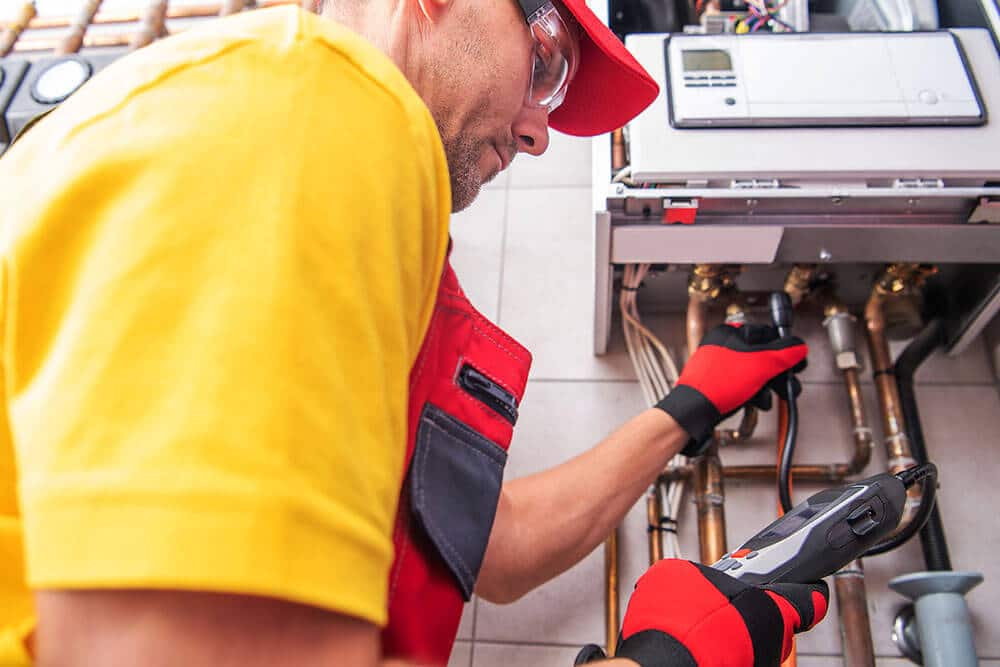Don’t we all long for a hot shower or bath after a long day to wash away all that fatigue and exhaustion? Hot water showers really bring about the best in us as they soothe our minds and souls.
However, at times, this relaxing experience takes a turn due to water heater problems. You may face problems such as low shower pressure, discolored water, and no hot water at all.
Therefore, the best option is to be aware of possible problems and solutions to prevent your water heater from acting up all of a sudden.
Continue reading as we highlight some hot water heater problems:
Possible Problems And Solutions Of Your Water Heater
Are you frustrated and struggling to get the perfect flow of warm water running down your showers? If yes, it’s because your water heater is not functioning properly.
Here are some indicators you need to keep an eye on to detect water heater problems, along with their solutions:
No Hot Water
A common problem is having no hot water despite having a heater. Hot water heater issues include a tripped circuit breaker or the high-temperature limit has been reached – requiring one to restart the hot water heater.
If not timely addressed, other issues may come forth.
Let’s see what other situations can cause problems, along with potential solutions:
- The dip tube can sometimes act up, needing to be replaced after draining the water tank
- Always reset the thermostat according to your temperature preference because, at times, setting a low temperature prevents the flow of hot water
- The increased hot water needs of homeowners’ add too much pressure on the water heater if its tank is small, resulting in the water heater tank leaking. Hence, it would be best to upgrade to a bigger one
- With continuous wear and tear, the heating component can stop working, so it is best to test them separately by touching the screws with a tester probe
Water Temperature Issues
Many people complain about water heater issues, especially when it comes to fluctuating water temperatures. Annoyingly, a water heater leaking from the thermostat hinders your daily routine.
The main reason is the low supply of power, resulting in cold water. Therefore, you should always check the power switches, indicators, thermostats, and connections to ensure appropriate power is supplied to the water heater.
Mineral Buildup
A common cause that disrupts the normal flow, pressure, and temperature of the hot water is a mineral or calcium buildup in the water heater. This usually happens after water is stored in the tank for longer periods and minerals start depositing on the base. This calcium buildup in the water heater makes it hard for the heater to warm the water in the tank.
To prevent water heater sediment buildup, it is best to drain and wash your tank regularly.
Strange Noises
Strange noises are a problem associated with water heater sediment buildup, where homeowners might hear crackling, sizzling, and hissing sounds in their electric water heaters. It’s usually because the heating system gets buried under sediments.
Discolored Water
Discolored water indicates that there is rust in the water heater. The anode rod of your water heater can catch rust over time, which can change the water’s color and pose health threats.
You can prevent your water heater from deteriorating if you catch it in its early phases. All you need to do is get professional help to replace the rusty anode rod with a new one.
Low Water Pressure
Another significant water heater problem is having low water pressure in your taps. This can happen for a number of reasons, such as sediment buildup, water heater installed far from taps, and shorter pipes. You can increase your water pressure by simply adding ¾-inch water lines to your system.
Heat Pump Leaks Water
Are you wondering why you have a leaking water heater? Well, it could be due to one of the following reasons:
- The water heater tank is leaking from the bottom, and it requires an entire replacement
- There is a loose connection or stripped threaded nipple at the top of the water heater, which needs to be fixed
- The pressure relief valve is broken and needs to be replaced
- The heat pump leaks water due to extremely high temperatures. Therefore, one needs to check for condensation near the water heater
- The ball valve is loose, and a simple tightening will secure the handle
- You need to ensure that the drain valve is closed correctly. However, you need to change it if it does not sit right and tight
Loose Or Damaged In-Line Valve
If there is a problem at the top of your water heating system, this indicates a loose in-line valve. The handle is usually placed at the top and is engineered to activate or deactivate the flow of water.
You can quickly fix this problem by tightening the nut that holds the ball or in-line valve in its place. However, if the problem persists, it’s time to replace the in-line valve of your water heater with a new one.
Damaged Pressure Relief Valve
A significant problem many homeowners face is that their pressure valve acts up, which can cause severe damage to their water heater. The pressure relief valve is engineered to discharge pressure from the water tank when it becomes substantially high.
Following that, you may be wondering “How do I fix a leaking pressure relief valve?” Well, all one needs to do is buy a new pressure valve and replace it with the old one.
Conclusion
Having an efficient water heater system is an everyday necessity, and that can’t be overstated. Therefore, it is best to do regular repairs and maintenance to eliminate all water heater problems.
One company that can efficiently cater to all of your water heating needs is Superior Plumbing and Drains, LLC. We are a world-class plumbing company with experienced staff and 24/7 emergency plumbing services.
Contact us now to learn more about our services!





